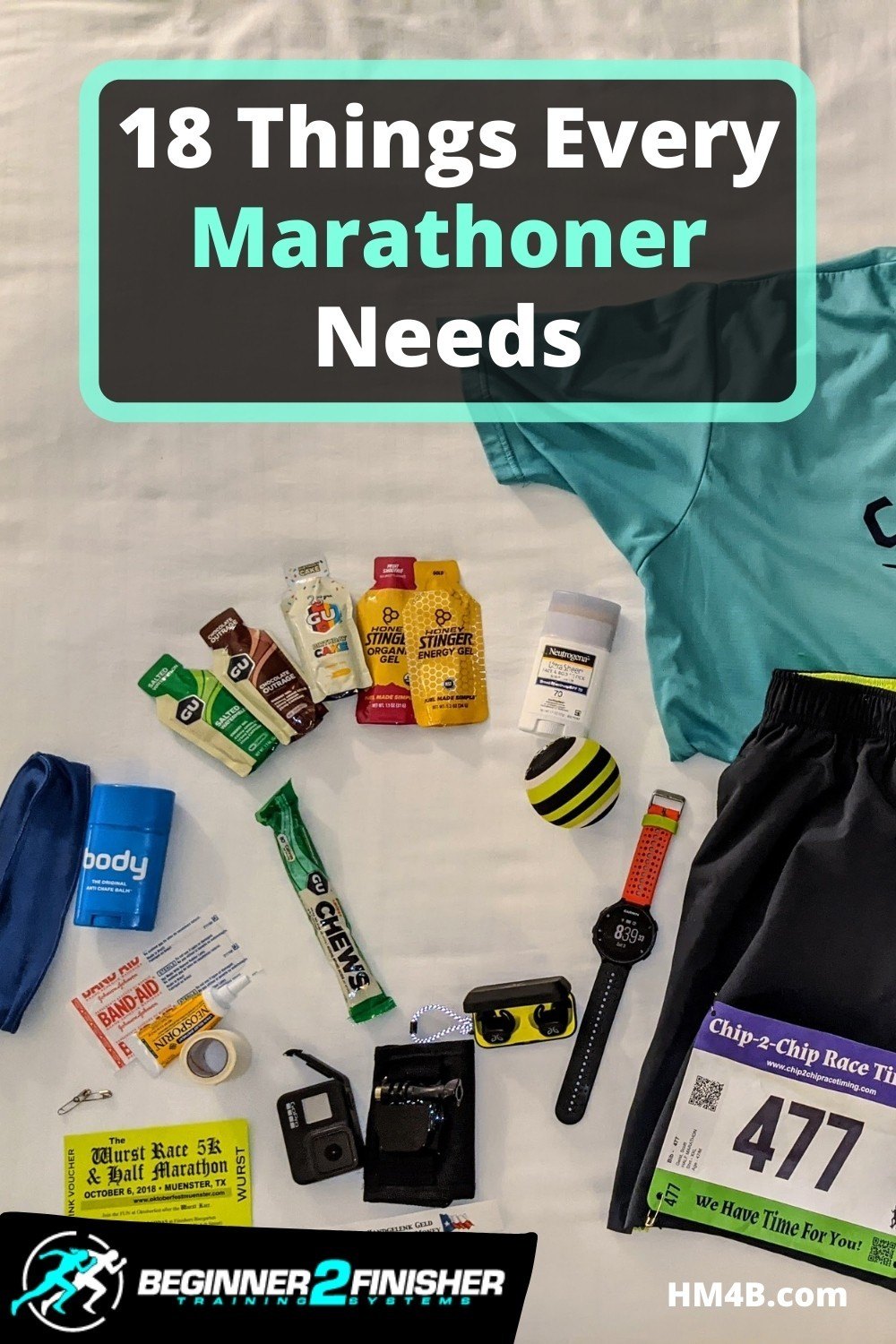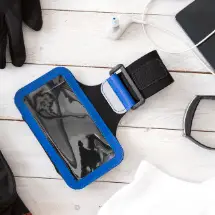The market is absolutely abundant in items aimed at runners. If you enter the sports department of any mall, you will probably end up believing that you must be rich in order to be a runner.
The truth is that anyone can run, and you can do that with items that you already own. There is no need to invest in something if you don’t want to and not owning certain gadgets should not be an excuse to not run.
This being said, there are certain things that make a runner’s life much easier.
Related: The Most Common Excuses For Not Running And How To Avoid Them!
1. Proper shoes
There are runners who prefer to go barefoot, but a good pair of running shoes means that you will have proper protection, that your ankles and knees will suffer less from the impact, and that you will run faster. A good pair of shoes are a runner’s best friend. Don’t ever run a marathon race in brand new shoes nor run a marathon race wearing completely broken down running shoes. For a guide on when to retire running shoes click here: When should you retire your running shoes?
For a complete detailed post about how to start running barefoot check out:
How to remain injury-free while barefoot running
2. Proper Clothing
Not so long ago, people believed that wearing cotton when exercising was the best option because cotton absorbs sweat.
Fast Forward a few years, and clothes that breathe, help sweat to evaporate, are a tight fit without restraining movements, and are light as air, were invented. Having proper clothes can make a great difference in your running ability and can bring a lot of comforts so these are a must.
What should you wear to your marathon race?
3. Mental toughness
It is a common misconception that in order to start running you need mental toughness. This is a character trait that you can build. It’s in your power to change this aspect of your life, and running can help you achieve it.
Running long-distance races does require a runner to be able to concentrate on their goal while going through hardship, but you can work on that as you go.
Different accessories
There are many accessories available on the market. Some are really useful and can save someone’s life.
4. A RoadID
RoadIDs are extremely useful for keeping you safe during a half marathon or marathon race. It comes in different forms, most of them come as a bracelet. They are very difficult to damage and contain information about your choice, aimed at First Responders, in case you are unconscious. You can write about who should they contact if you are on medication or have particular conditions, your blood type, or if you are a diabetic.
5. Compression Sleeves
Depending on the distance that you are going to run, arm compression sleeves (Amazon Link) could help you because they ease the swelling of the hands that comes with endurance training.
6. The Stick
The runner’s stick (Amazon Link) is made of rubber and has some cylinders that once pressed on the leg’s muscles massage them, relieving tension and easing pain. It is a useful tool to have, but it can easily be replaced by skillful hands.
7. Balega Socks
Balega socks (Amazon Link) are created especially for long-distance running because they are made from a non-slip material that allows the feet to breathe. During long-distance races, if your feet slip inside your shoes, you will get blisters.
8. Earbuds/headphones
Some races allow you to wear earbuds/headphones while others do not. Some races will disqualify you if you get caught wearing earbuds. However, this shouldn’t deter you from wearing and enjoying your music or podcasts while running. For a great pair of earbuds check out:
- Jaybird Vista True Wireless Bluetooth earbuds (Amazon Link) – these are the earbuds I use and work flawlessly through rain and sweat.
9. GPS SmartWatch
GPS Watches can help a runner track their own progress during a race or during training. With so many choices to choose from, I’ve put together an extensive review of the best half marathon and marathon smartwatches. You can’t go wrong with the Garmin 245 Music GPS smartwatch (Amazon Link). The Garmin 245 Music contains tons of running metrics and can store and playback music without your phone nearby via Bluetooth. For a deeper dive into GPS smartwatches check out:
The best half marathon and marathon GPS smartwatches.
10. Armband Smartphone Holder
A lot of new runners always ask, “Where do I put my phone when running,” you really have just a few choices such as your hand, a belt, your pocket, a hydration pack, or an armband. Here is the armband that I still use:
11. Foam Roller
Foam rollers are used in the recovery process, acting as a massage tool, for areas that a person can’t usually massage by themselves properly. My favorite massage tool is a small compact travel-friendly trigger point massage ball. It’s the perfect size to take with you everywhere you go and it can get into smaller/tighter areas that a foam roller can’t reach.
Related: How To Pack Your Suitcase For a Destination Running Race!
12. Body Glide
Body glide is not aimed at making a runner shinier, but to prevent irritation from the constant rubbing with clothes. Its primary goal is to prevent chafing between the inner thighs and other body parts.
13. Flip Belt
This is a belt made from a comfortable material, that will not move around as you run and has many pockets in which you can store keys, phones, or other accessories. The Flip Belt (Amazon Link) is the most popular minimal running belt I’ve come across.
14. Sunglasses
These are a must if you run in sunny weather or in snow. Without proper sunglasses, the eyes can suffer from retinal damage and your vision can be impaired by the strong light, causing accidents.
Related: Best mineral-based sunscreens for runners
15. Energy Gels
Energy gels are a combination of nutrients and caffeine that runners sometimes use during races or long-distance training.
They are useful because they are concentrated, and can quickly replenish a runner’s reserves for carbs or magnesium.
Related: Does caffeine boost running performance? How much caffeine should I consume before a run?
However, they should be used with care (and with lots of liquids), and only occasionally. They are efficient during a race because once you are out of glucose and glycogen, eating solid food takes longer to assimilate than energy gels. Plus you don’t want solid food jostling about in your stomach when your racing.
Food takes time and energy to digest, and during a race, you have neither. The best strategy is to take eat your gels with water and eat them before you need them starting at the beginning of the race. This will help stem off a drastic drop in blood sugar causing you to extend your fuel source beyond the initial 90 minutes of running.
For a more detailed post about half marathon and marathon fueling, check out: How many energy gels do I need to eat for races?
For a detailed review of over 7 different energy gels check out: Best Energy Gels For Runners
16. A Marathon Plan
A marathon plan is different from a training plan and it can be useful to people who enjoy being organized and knowing what’s next.
Having a marathon plan means planning everything from the pace that you will start with, to what you should eat or drink at checkpoints.
However, don’t get discouraged if you don’t follow your plan. A race has many variables, and many of them are out of our power. Sometimes it is better to just go with the flow and do your best.
17. Mobile Apps For Runners
There are a lot of mobile apps aimed at runners, and many of them are free. Installing one can help a runner track progress, learn what areas of the course they have difficulties with and they can even offer to coach.
One of the best features of some apps is the fact that you can sync a heart monitor chest strap belt to them. Interpreting the data from your heart rate monitoring device will help teach you how you feel and how your body is reacting to different types of workouts under varying conditions.
Strava and Nike Run Club are both great that allow many different running options including preloaded workouts, running routes, and community support. Here is a great post that looks at the differences between both apps:
Strava vs Nike Run Club: Which Is a Better Running App
Running long distances and improving your race time will bring you both physical and emotional rewards, but when you are training aim at seeing it as “me time” instead of “hard work” or “training” because it truly is that: time with yourself, for yourself.
18. Water Carrier / Hydration Pack / Hydration Belt
Wondering whether or not you should carry your liquids (sports drinks/water) with you during a half marathon or full marathon. I wrote a detailed post on whether you should carry water with you during your half marathon or marathon race?
There are basically 4 types of ways to carry water during a race – a Water Carrier (hydration pack), a Hydration Belt, a handheld bottle holder, or in your hand.
Water Carrier (Hydration Pack)
A Hydration pack is carried on your back with a water supply equaling anywhere between 1 liter and 4 liters. 2 Liter hydration packs are the most common. Some of the hydration packs (or hydration vests) come with storage for two additional water bottles up front for easy access.
- Nathan Hydration Running Vest (Amazon Link)
- Nathan Women’s Hydration Pack with water bottle storage (Amazon Link)
For a more detailed review of the best hydration water packs for half marathon or marathon races, including budget choices, check out:
Best Hydration Water Packs For Half Marathon or Marathon Races
Hydration Belt
A hydration belt is worn around the waist with all of your items located on the small of your back. Most allow for two bottles and a zip compartment. Here are a few great choices for hydration belts:
handheld Bottle Holder
Just like the name implies this bottle holder is wrapped around your hand so that you don’t have to grip the entire bottle for the whole race.
Are Running Accessories Necessary?
The only thing that you really need in order to run is motivation and a pair of running shoes. Most of these accessories are not a must, and not being able or willing to invest in the running gear shouldn’t mean that you will not go running.
However, these accessories emerged from other runner’s needs, meaning that they are useful to some, and they might also be useful to you.
| Help support me and subscribe to my YouTube channel. YouTube video - 30 ways to make your runs less painful! Coach Scott's Credentials:
|
To sign up for a FREE half marathon training schedule, log sheet, and pace predictor CLICK HERE.

Recommended gear for runners
Connect with me:
| facebook.com/BeginnerToFinisher/ |


